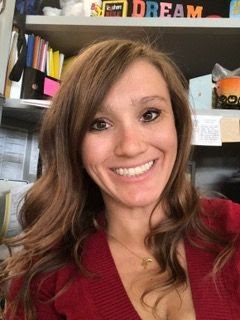 In this Spotlight, we highlight Britney Jones, new lead user of SIPPS at William Jack Elementary School in the Glendale Elementary School District. Britney shares her experience discovering the importance of structures and routines in an ELA intervention program. Britney describes how the design of SIPPS keeps students focused and allows teachers to ”jump in” and quickly adapt. She celebrates the growth her classrooms are seeing.
In this Spotlight, we highlight Britney Jones, new lead user of SIPPS at William Jack Elementary School in the Glendale Elementary School District. Britney shares her experience discovering the importance of structures and routines in an ELA intervention program. Britney describes how the design of SIPPS keeps students focused and allows teachers to ”jump in” and quickly adapt. She celebrates the growth her classrooms are seeing.
Tell us a little about yourself, your school/district, and the students that you serve.
My name is Britney Jones, and I have worked in the Glendale Elementary School District for 12 years now. I taught Kindergarten for five years and 2nd grade for five years.
For the last two years, I have been an achievement advisor. We support teachers with professional development, individual coaching, and team coaching in their professional learning teams. We also pull small groups to support students, analyze data, and flex students/groups when necessary.
My main focus this year is Tier 3. Using our school’s data, we found that our students were in high need of intervention in reading. Therefore, it was my job to create a schedule and form groups for Tier 3 using SIPPS.
What is the most rewarding part of being an educator for you?
The most rewarding part of being and educator is seeing the growth our students make. Our ultimate goal is to have every student at or above grade level, but I think it is extremely important to celebrate student growth.
I also truly enjoy working with teachers, other colleagues, and my administrators to grow as a professional each year.
How long have you been implementing SIPPS? Tell us a little about your implementation.
I have been implementing SIPPS since August 2021. I trained and created a schedule for three education assistants (EAs) and myself to ensure we are able to support every student who needs it. I worked around teachers’ schedules to ensure students were not missing direct instruction, recess, or specials.
We have two EAs in one classroom, and one EA and myself in another classroom. The rooms are next door to each other so we can easily collaborate as a team. Each group is twenty minutes long, and we are doing groups all day long.
What do you appreciate about SIPPS?
I appreciate the routine of SIPPS. It makes it easy for teachers to use and allows students to know what each day is going to look like. When students have routine and structure they are better able to focus on the content.
I appreciate the routine of SIPPS. It makes it easy for teachers to use and allows students to know what each day is going to look like.
What have you noticed about your students’ learning and engagement?
The students are progressing well through SIPPS, they are becoming more fluent with letter sounds, blending, segmenting, reading, and writing. Students are always engaged because they know what to expect with each lesson, and they love being able to have their own mini-books.
How has SIPPS affected or changed your own teaching and learning?
SIPPS has helped me realize that a scripted program/intervention is necessary. I think as educators we always do our best and think that what we are doing is working—and that is true some of the time.
However, we need research-based materials to ensure we are helping our students continue to grow. SIPPS has reinforced that students can thrive when they have structures and routines built into their learning.
SIPPS has reinforced that students can thrive when they have structures and routines built into their learning.
What advice or insights would you share with an educator who is new to SIPPS?
I would say that they just need to jump in and start teaching the lessons. It can seem overwhelming at first, but you will get the hang of it and it will become second nature to you. Each SIPPS lesson is set up the same way, so the more you teach it, the better you become.
How do you see SIPPS aligning with Arizona’s push to implement effective, evidence-based literacy instruction?
Since it is an evidence-based program, I feel that it aligns well with Arizona’s push to implement effective literacy instruction. Every part of SIPPS is well planned out, and having the QR codes to show exactly how each section should be taught is extremely helpful. It makes it so there is no doubt or questions about how or what to teach.
SIPPS also includes every section a literacy block should have: phonological awareness, phonics, sight words, reading, writing, and fluency.
